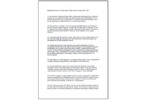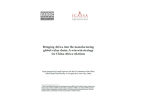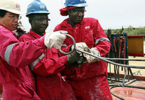Paper by Phyllis Johnson
Vision and Actions on Jointly Building a Silk Road Economic Belt and 21st Century Maritime Silk Road –“Belt and Road”
This new policy was announced in March this year by President Xi Jinping of the People’s Republic of China and is collectively known as “One Belt, One Road”– or simply the “Belt and Road” policy. This is a development policy — economic, political, security — it is all of those things collectively, but none of those things separately, in the sense that it is a holistic vision to reach out and initiate action to jointly build a new world order that is development-oriented, with mutual prosperity as its goal, and human security at its heart.
China’s vision for the Silk Road Economic Belt and Maritime Silk Road is expected to change the world political and economic landscape through rapid development of infrastructure and transport corridors of countries along the routes, most of which are eager for fresh growth, many of which are in a conflict situation. Beijing hopes that annual trade volumes between China and the “Belt and Road” countries will “surpass 2.5 trillion US dollars in a decade or so.”
That is a very short target period, its already moving, and the emphasis is on Joint. While China is establishing mechanisms for financing, such as the Asian Infrastructure Development Bank and the BRICS New Development Bank, other countries are expected to not only contribute to their own development, but to grasp the vision.
The initiative will establish new routes linking Asia, Africa and Europe. It has two parts — a new “Silk Road economic belt” linking China to Europe that cuts through mountainous regions in Central Asia; and the “maritime Silk Road” that links China’s port facilities with the African coast and than pushes up through the Suez Canal into the Mediterranean Sea.
Some experts question how China will establish security for these new routes, since many of them run through potentially dangerous areas such as Africa’s coast which is subject to maritime piracy, and the “wild west” of Central Asia facing extended conflict. However, improving the economy of Central Asia is expected weaken the root cause of terrorism and help to stabilize Central Asia and the Middle East.
The routes will require logistics hubs, communication networks, airports, railway lines, modern highways, ports and a military component that allows for a rapid response to a crisis.







